Liquid Wallpaper - (110 photo)
Modern industry offers a wide range of materials for wall decoration: decorative plasters, paints, various types of wallpaper. Not knowing the characteristics of each of them, making a choice is not easy. This is especially true of liquid wallpaper, which is often considered one of the varieties of decorative plaster. In fact, these materials are different in composition and quality.
What is liquid wallpaper
This type of finish is a mixture of fibers of natural cellulose, silk or cotton, with glue as a binder. Fungicides that prevent the appearance of mold, various plasticizers that increase plasticity during application, and components that add decorativeness: dyes, mica chips, nacre are added to it.
Pros and cons
The undoubted advantages of liquid wallpaper include:
- Environmental friendliness. Made from natural ingredients, this finish does not emit harmful substances during operation.
- The ability to hide minor irregularities and imperfections of the base. Unlike roll wallpaper, before applying liquid, you do not need to carefully align the walls. The coating is applied with a thickness of 2 to 5 mm, which allows you to hide small flaws in the surface.
- Antistatic properties: this material does not attract dust.
- Fire safety. Liquid wallpaper does not emit harmful substances during combustion and have the ability to self-extinguish after a short time.
- Resistance to ultraviolet, which means the ability to maintain the original color for many years.
- Convenience of drawing around pipes, in corners and other hard-to-reach places - where traditional wallpapers have to be cut
- Plasticity of the coating, so that it does not crack and does not crease in the corners with a slight draft of the building.
- Resistance to changes in temperature and humidity. Unlike rolled wallpaper, such a coating will not lag behind the walls in any conditions, which is especially important when decorating public spaces.
- The ability to "breathe", creating a favorable microclimate in the room.
- Ease of removal. If replacement of wiring or gating is required, the layer of wallpaper in the required area is removed with a spatula, and upon completion, it is diluted with water and again applied to the wall. Do the same if you need to remove a heavily soiled part of the coating: it is removed and replaced with fresh.
- The ability to create your own color finishes of your choice, and if desired - patterns and drawings. To this end, unpainted formulations are produced, which are easy to give any shade using a special color scheme.
"Minuses" in liquid wallpaper a bit. Such a coating is afraid of moisture, so it can not be used to decorate bathrooms. They are not suitable for the kitchen, since the walls in this room have to be washed often. Of the relative shortcomings can be called a higher, compared with conventional wallpaper, cost.
What rooms are suitable for liquid wallpaper
Liquid wallpaper is appropriate almost everywhere, except for bathrooms and kitchens. They can decorate the walls and ceilings of residential and public buildings. This coating has proven itself in the interiors of living rooms and bedrooms, combining environmental friendliness and aesthetics. In addition, the material is pleasant to the touch, which is especially important for children's rooms, and a damaged or painted by a child area is easy to replace.
With the help of liquid wallpaper, you can create unusual effects in the interior, for example, combining them with photo wallpaper or artificial stone.The fluorescent paint added to the mixture will allow you to create softly glowing in the dark patterns or to emphasize the contours.
How to apply liquid wallpaper
The main thing is to follow the instructions on the package, where the correct proportions of dilution of the mixture are indicated. The dry mixture must be poured with warm water and mixed. It is better to do this with your hands and not use a construction mixer, so as not to destroy the texture. After mixing, the container is covered with plastic wrap and allowed to swell for approximately 12 hours.
The finished composition is evenly applied with a spatula or trowel to pre-primed walls. It is better not to use materials from different batches on the same surface: this will avoid the heterogeneity of color and texture.
How to make liquid wallpaper yourself
This will require sheets of paper - old books, office waste paper, newspapers and packaging. All this is carefully crushed and filled with water at the rate of approximately 5 liters per 1 kg. The mixture is left for several hours to soften the paper, and then mixed with a construction mixer until smooth.
PVA glue, dye are introduced into the base prepared in this way and mixed again. Further, as in the case of the finished mixture, the mass must be allowed to “mature” for 12 hours, after which decorative materials are added to it - spangles, fibers and so on. Such a composition can be stored for several days without loss of quality.
Another necessary component of homemade liquid wallpaper is gypsum. It is added immediately before application, after which the mass is thoroughly mixed. This composition can no longer be stored - thanks to the presence of gypsum, it hardens quite quickly.
How to make drawings
In this case, the desired pattern is applied on the wall with a pencil and carefully filled with a mixture. It is necessary to wait for partial drying and, if necessary, cut the material protruding beyond the edges, and then proceed to the application of the main background. If you create a drawing of several colors, it is performed in stages, allowing each site to dry for several hours.
Coating care
Since liquid wallpaper is afraid of water, only dry cleaning is allowed - with a soft brush, brush or vacuum cleaner. A stain from the surface can be removed along with the material, and then fill the area with a new coating.


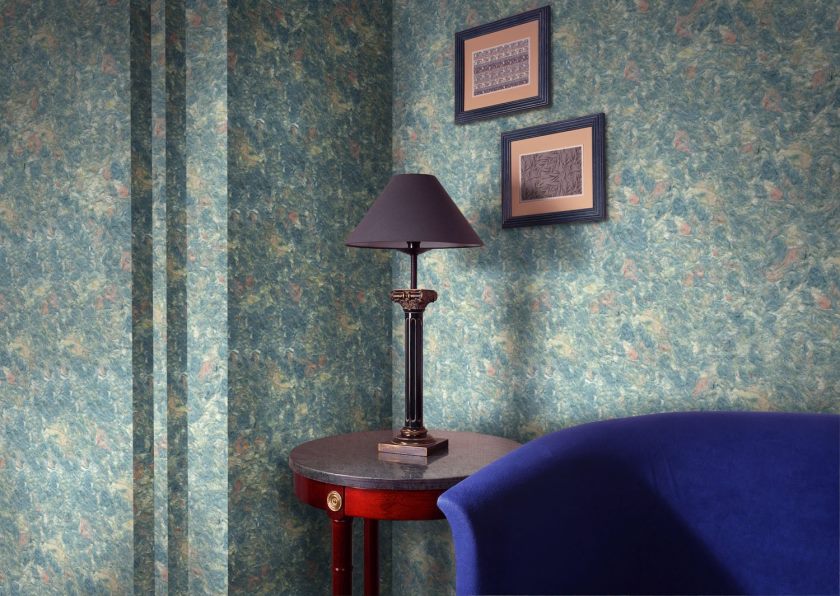
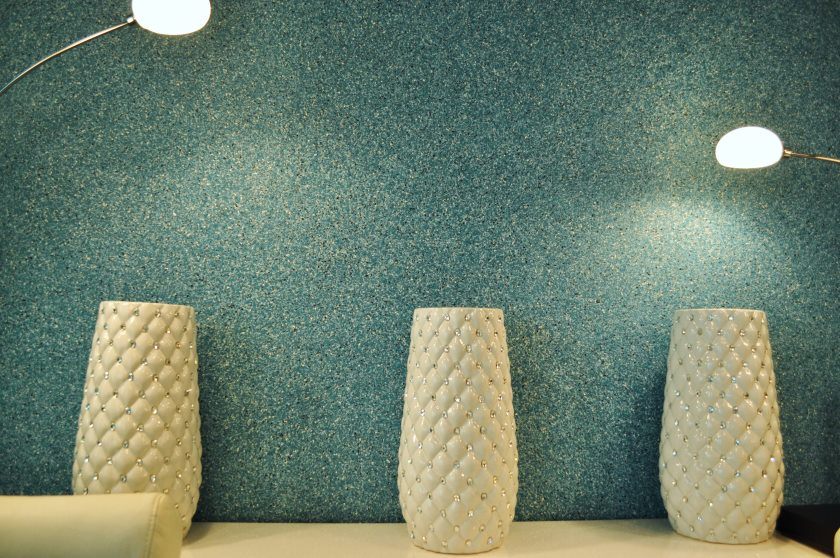

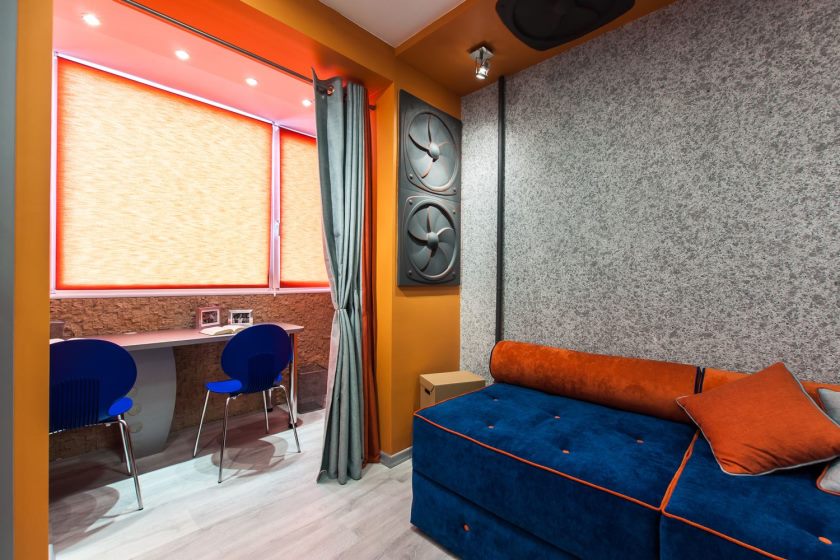
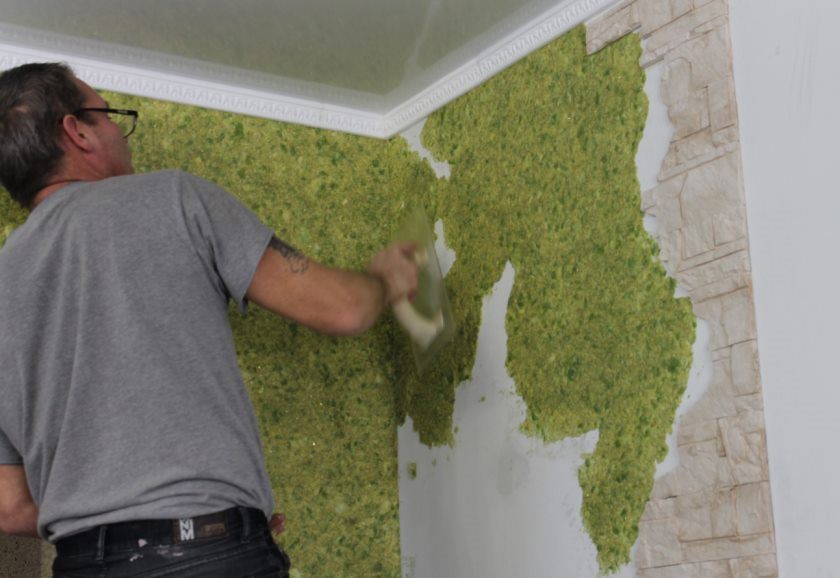
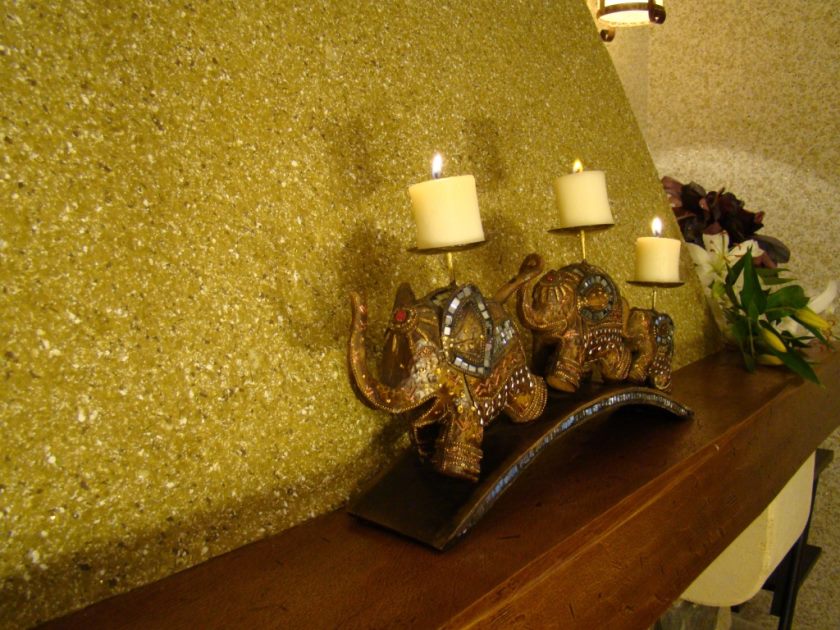
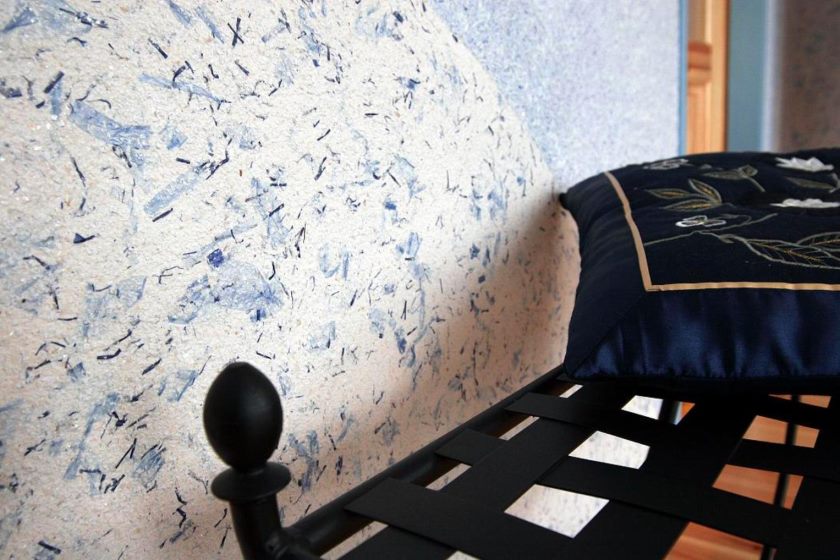

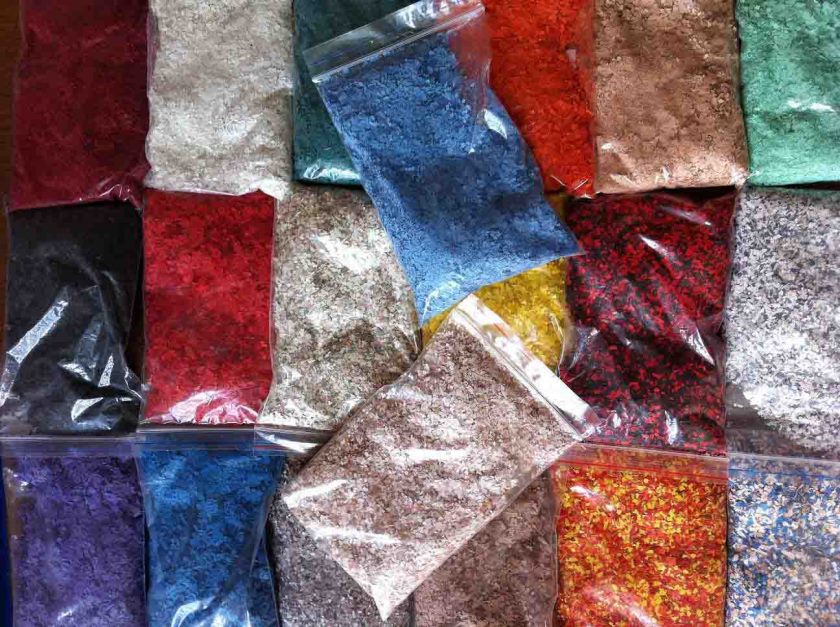





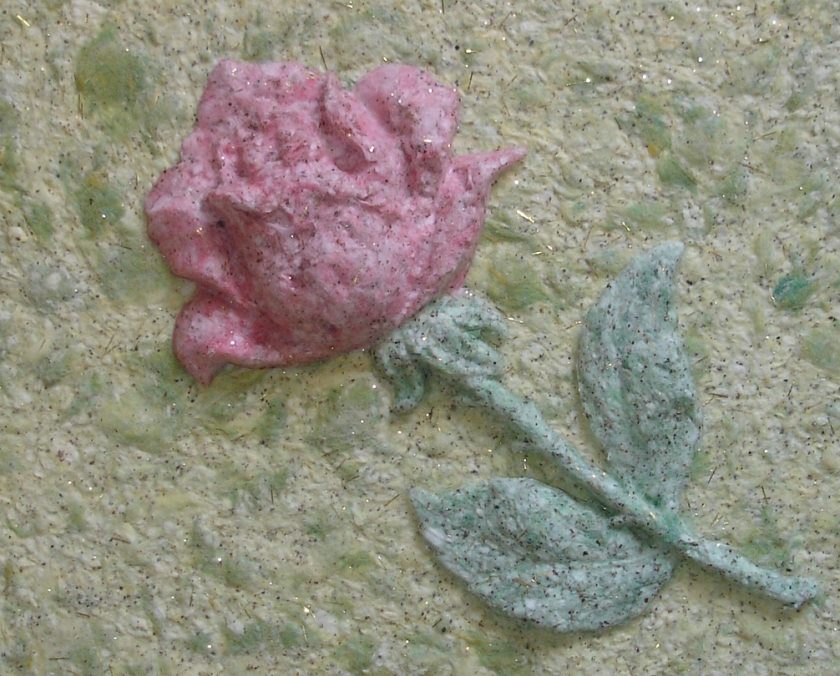
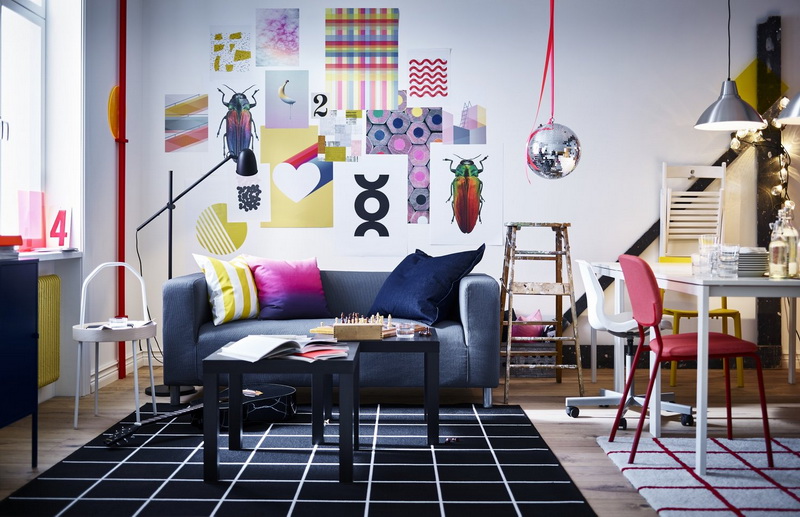
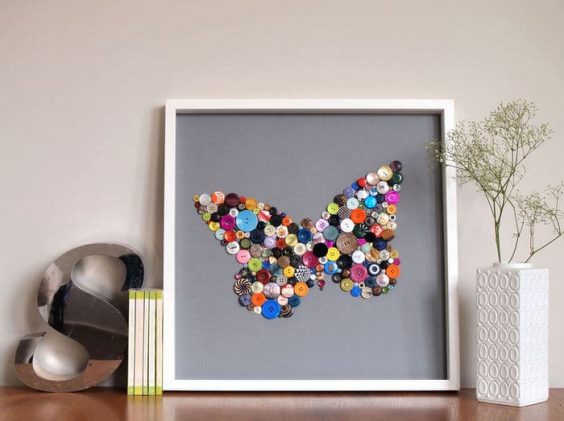
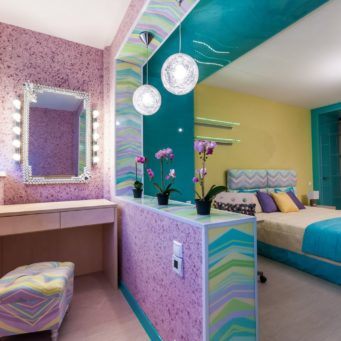

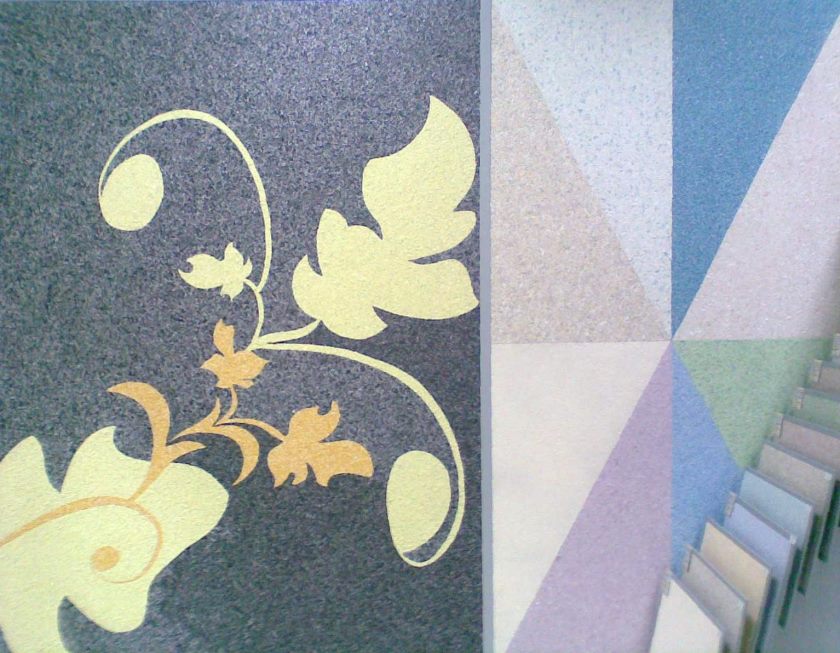










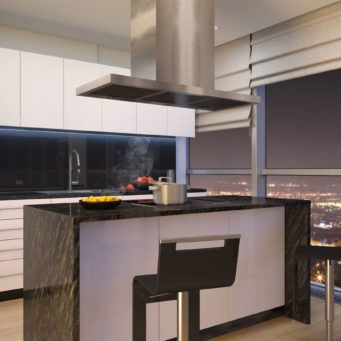


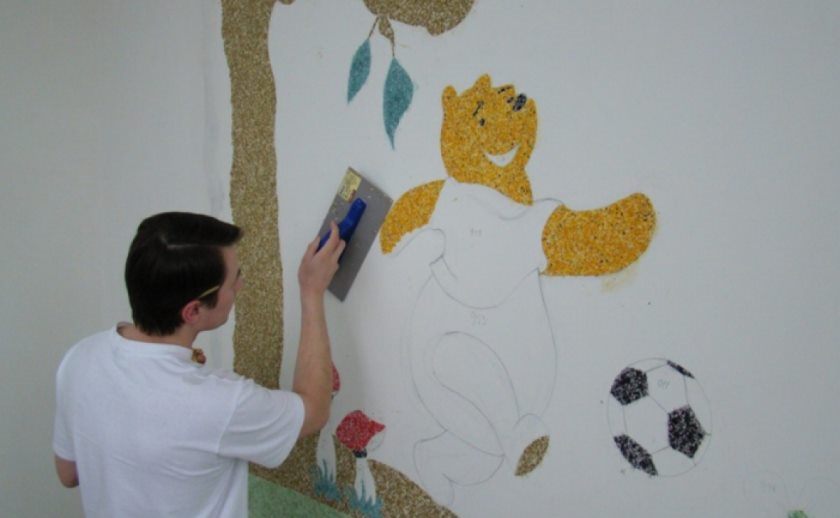




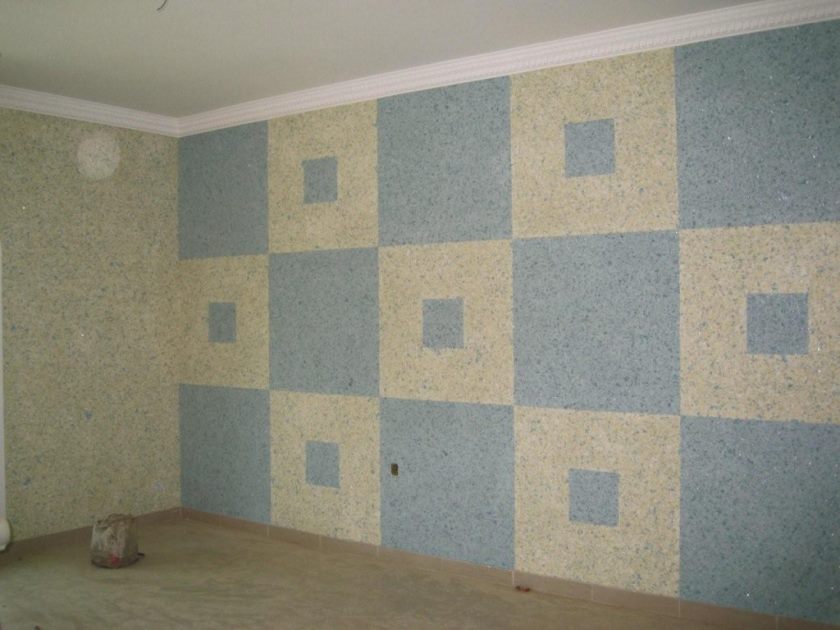

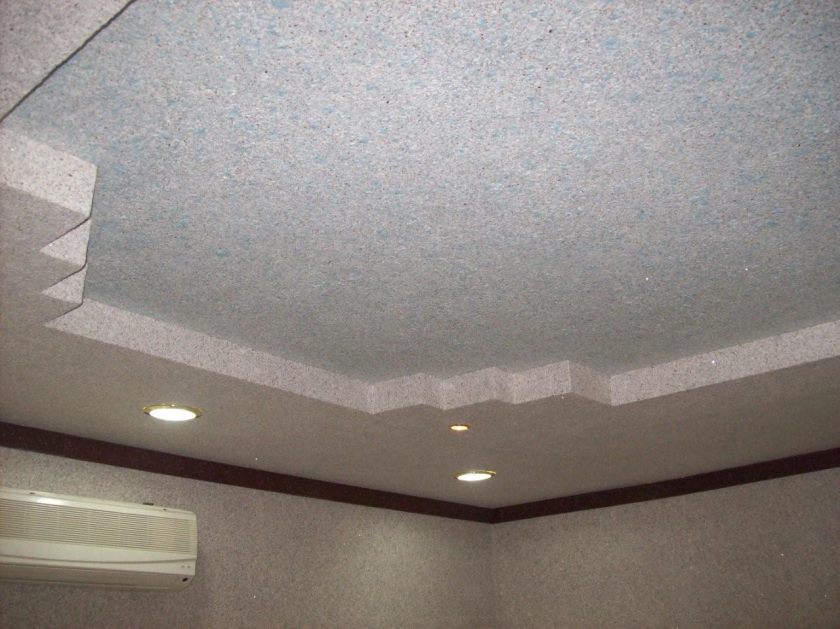


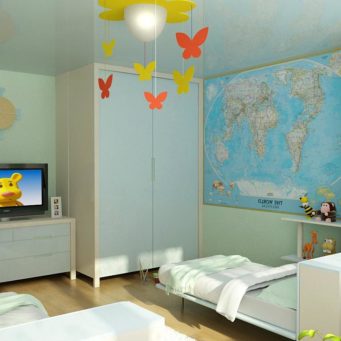
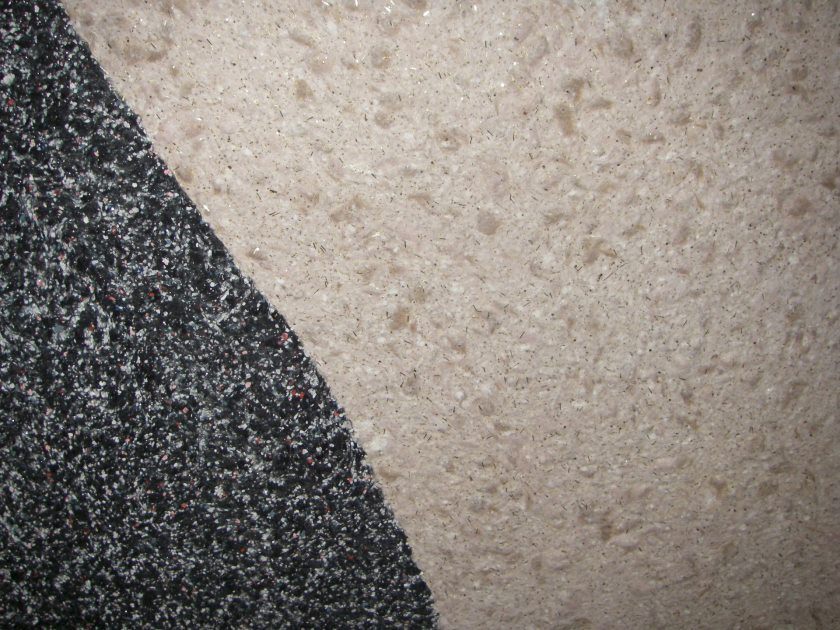
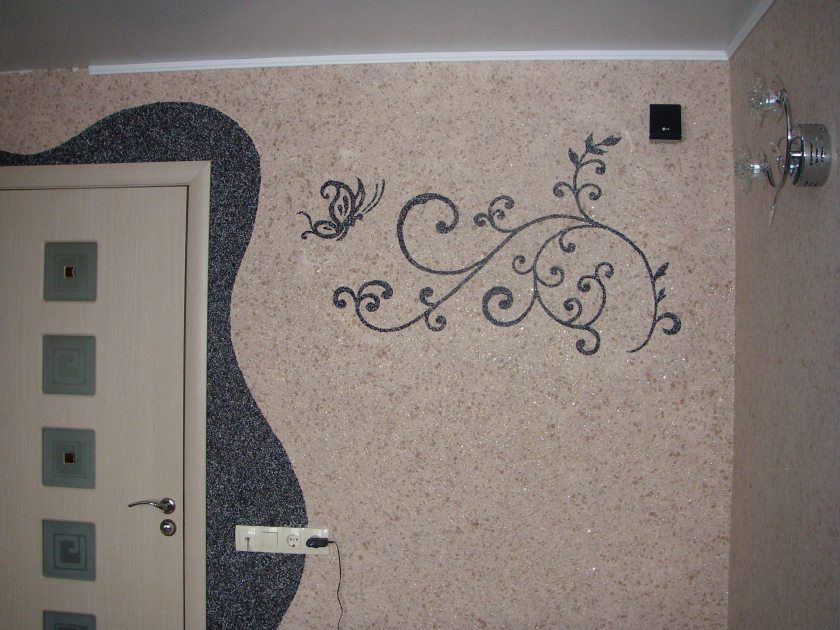
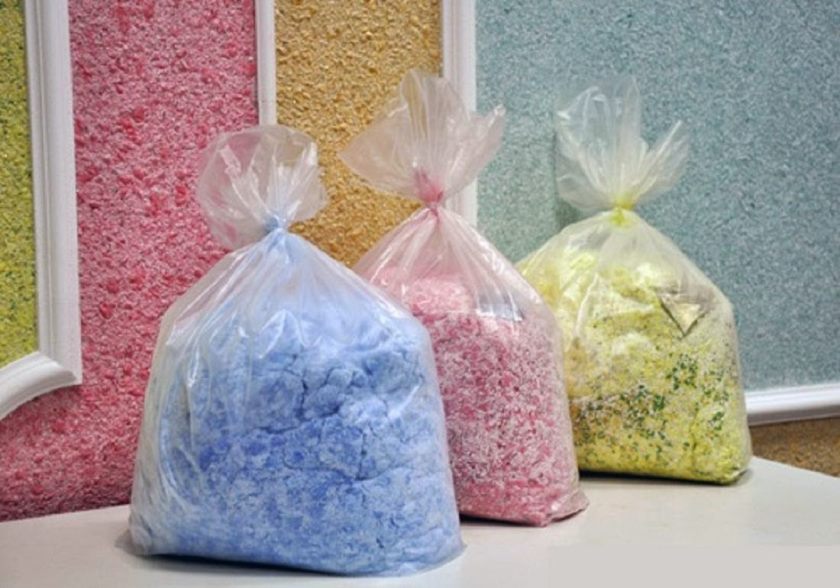
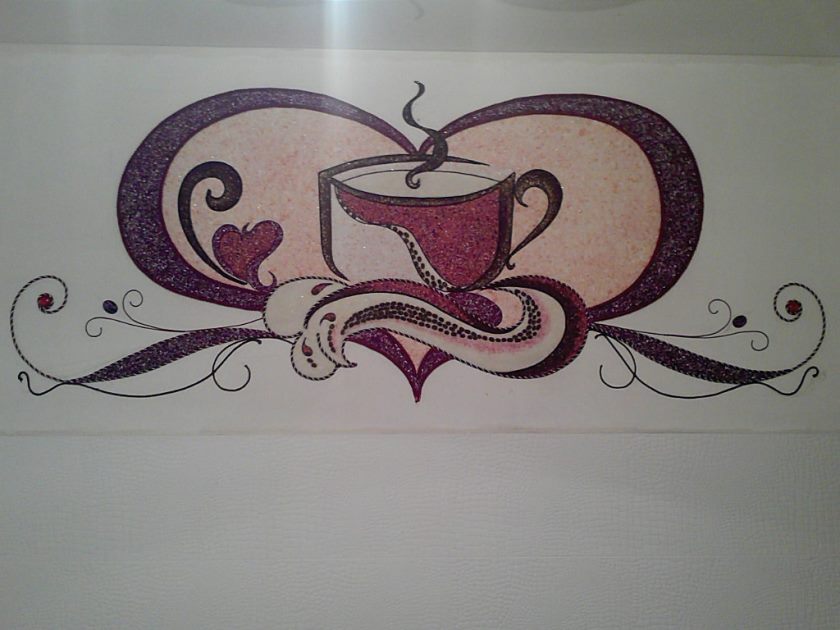
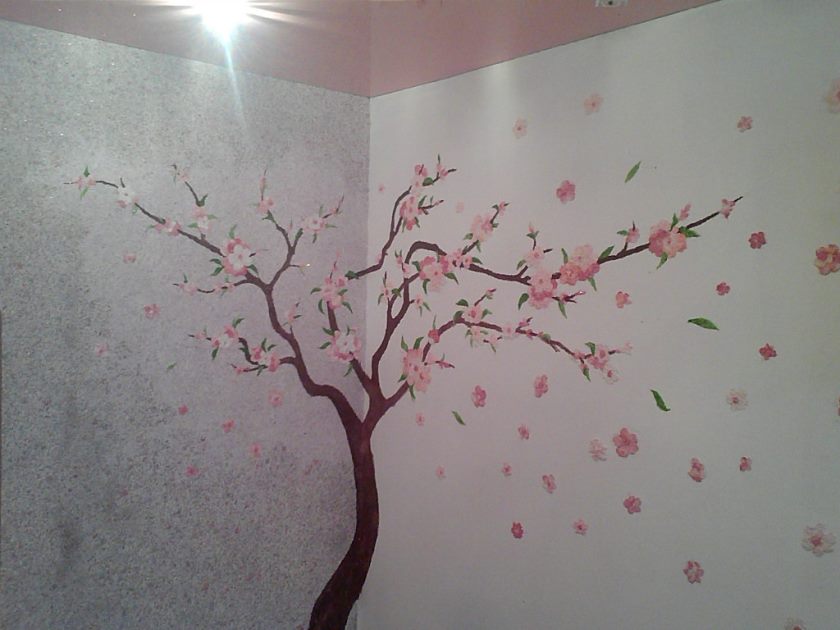
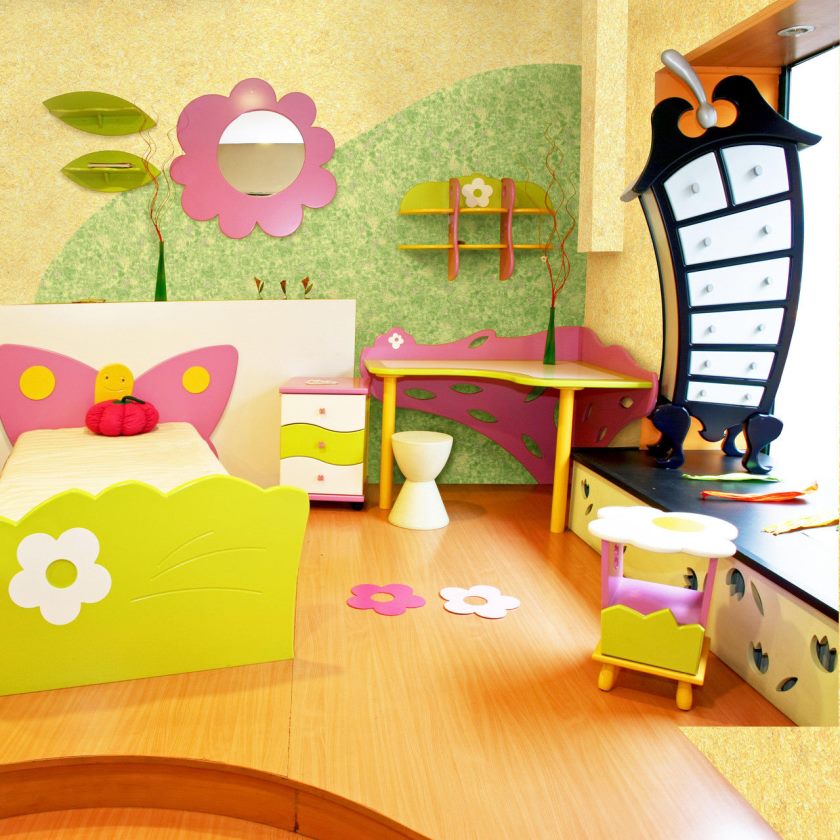

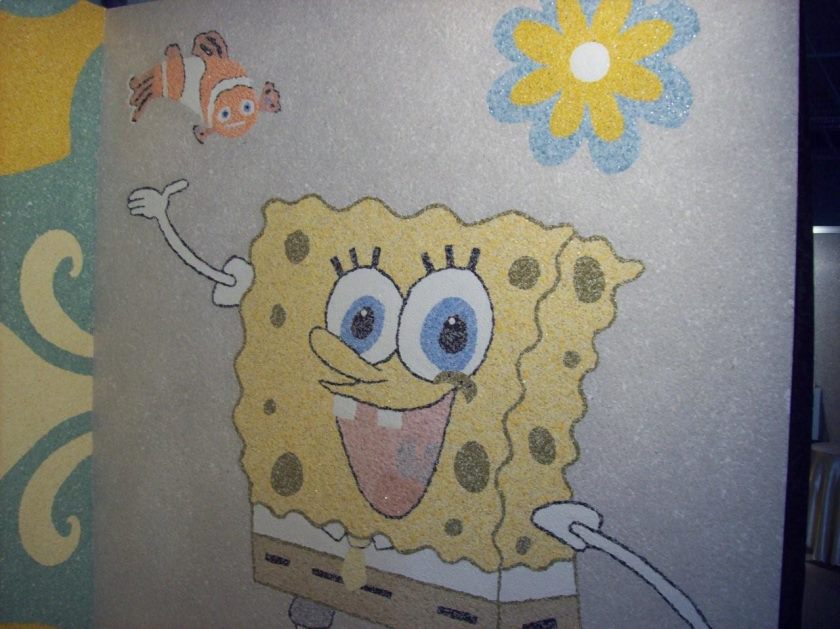
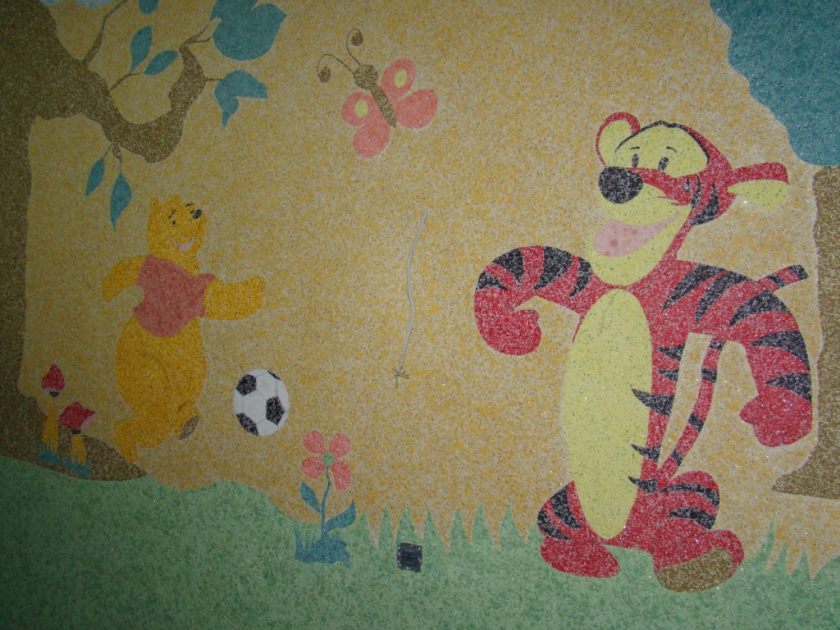
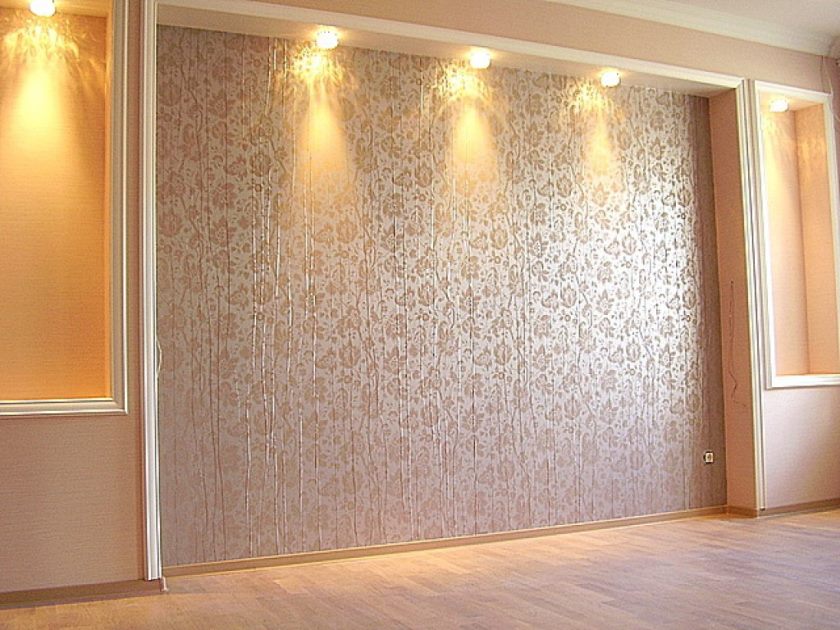
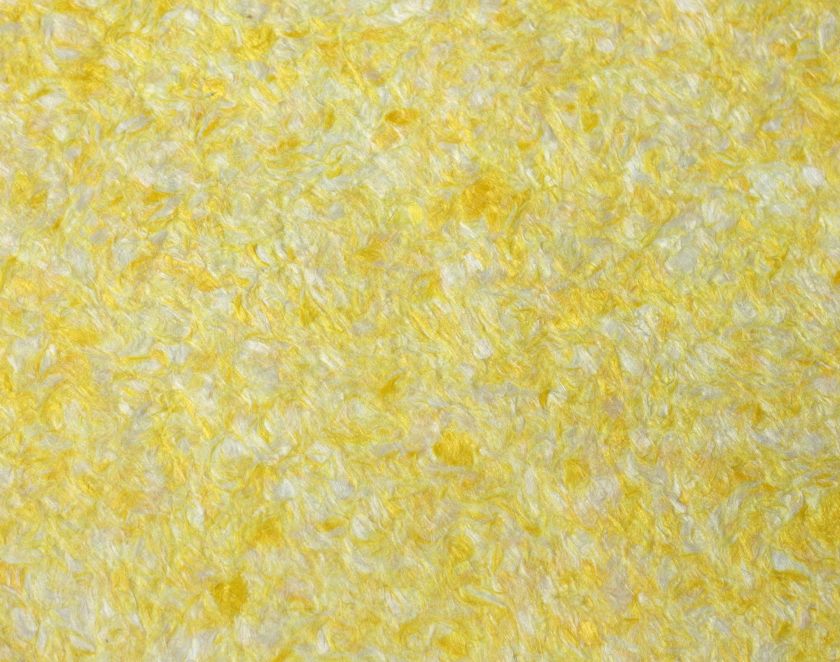

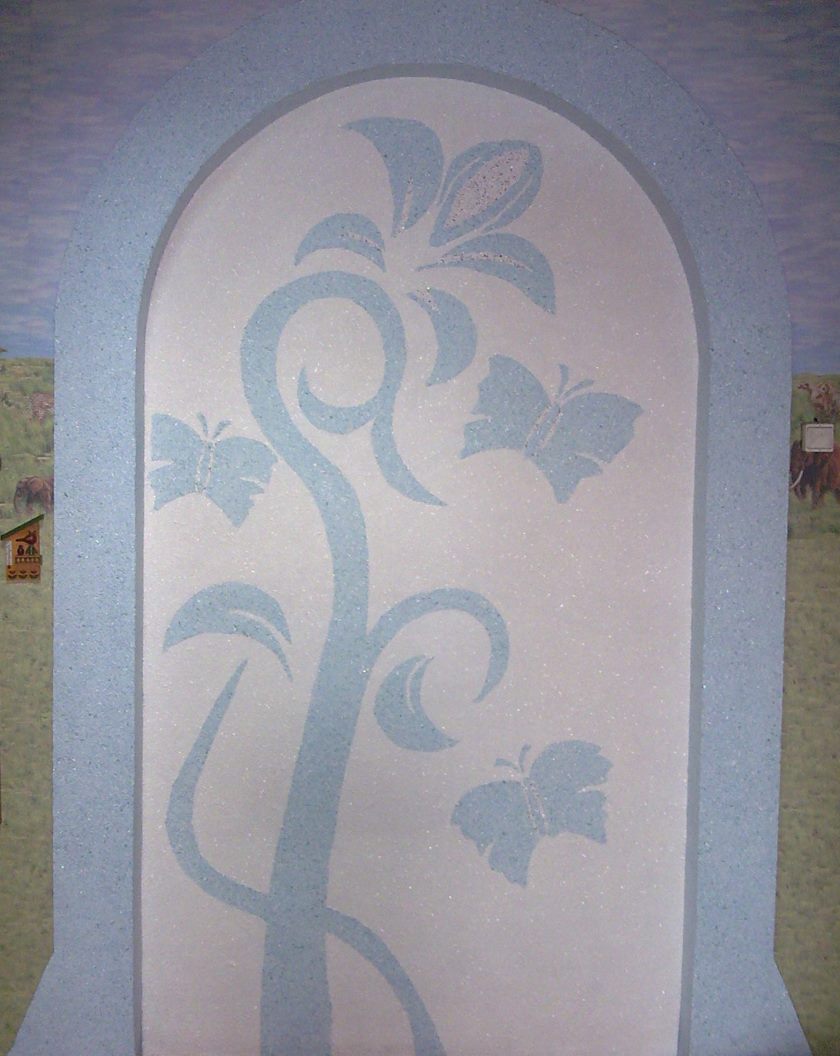
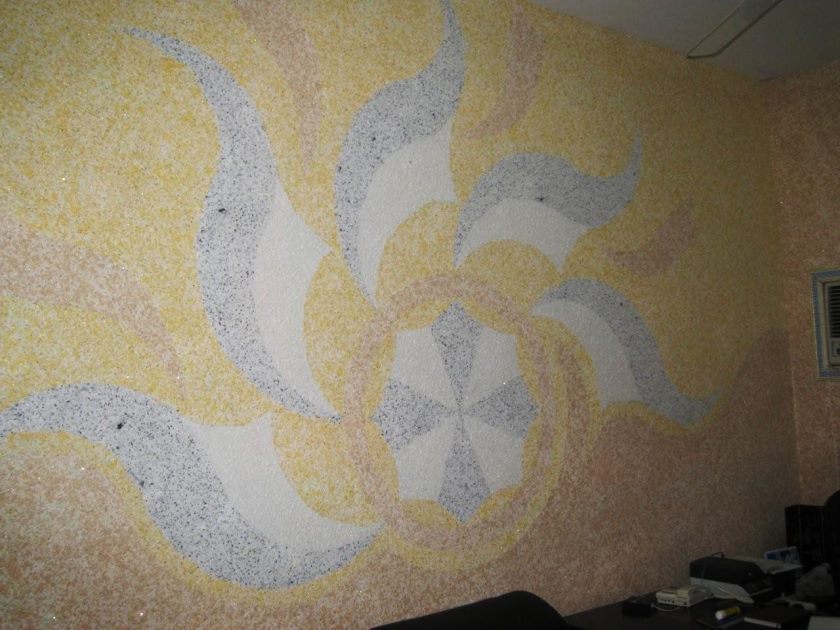
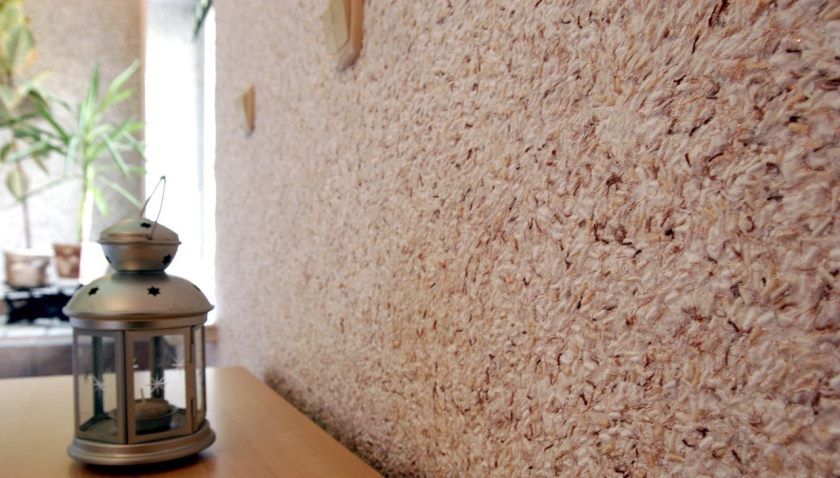

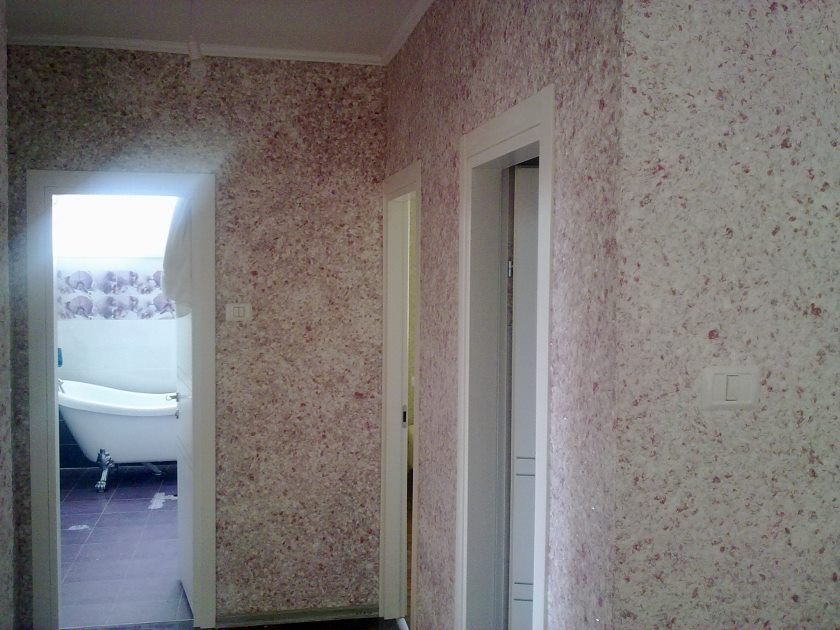

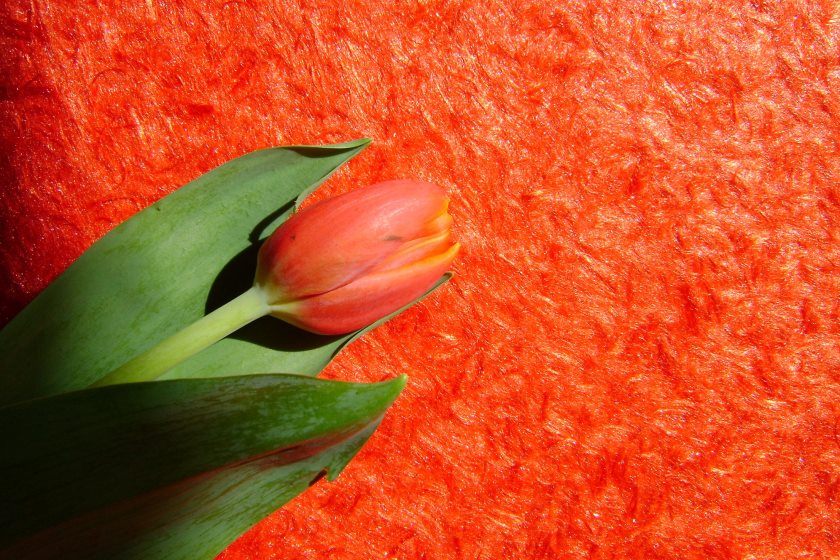
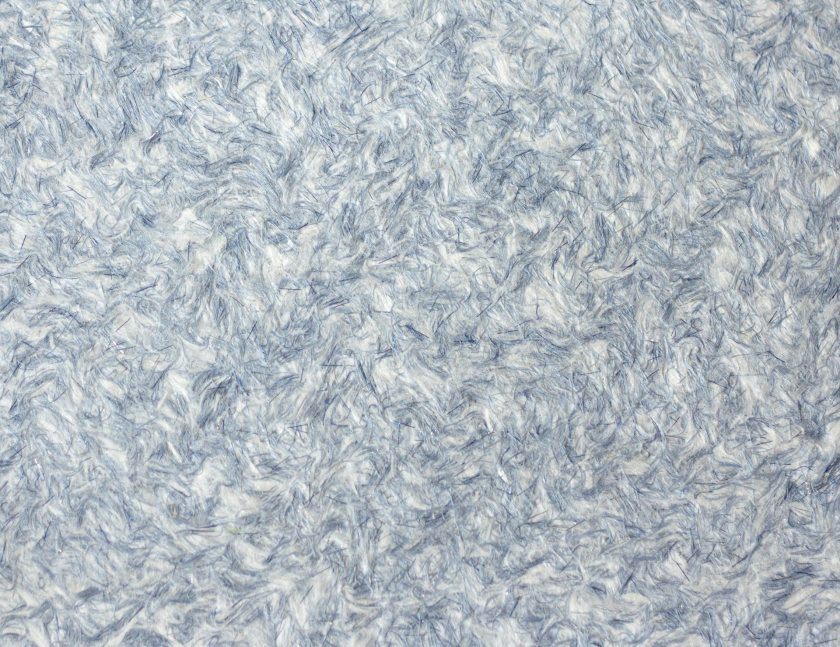
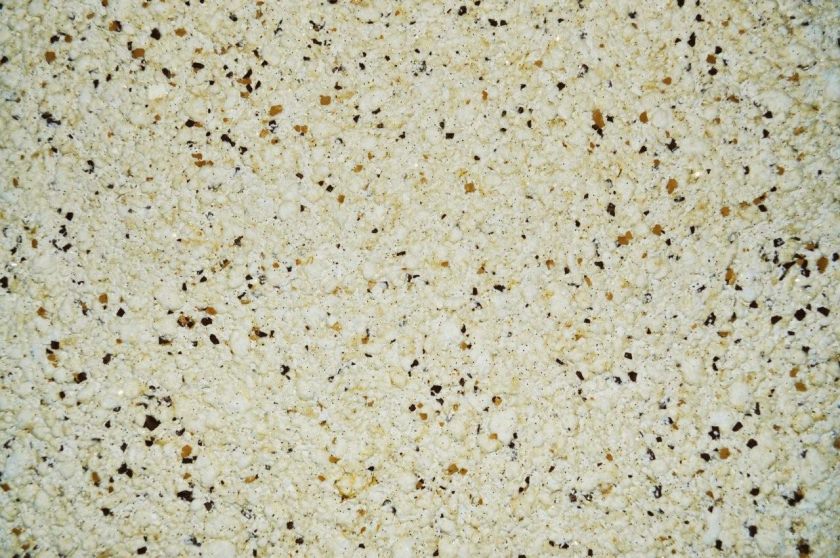
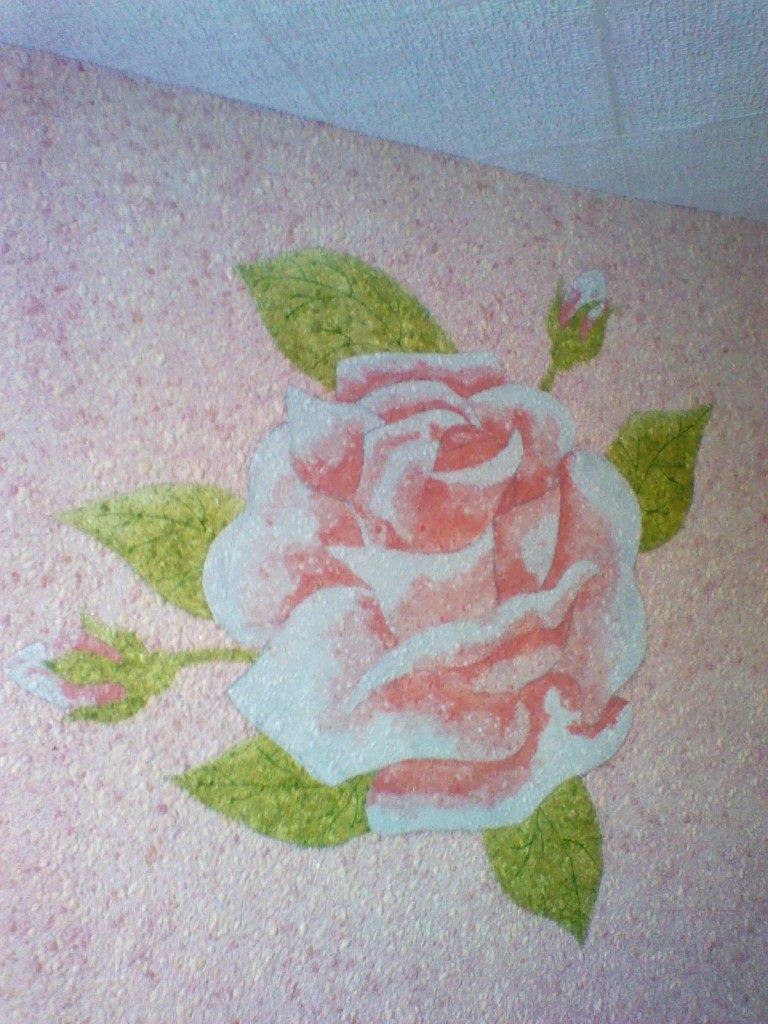
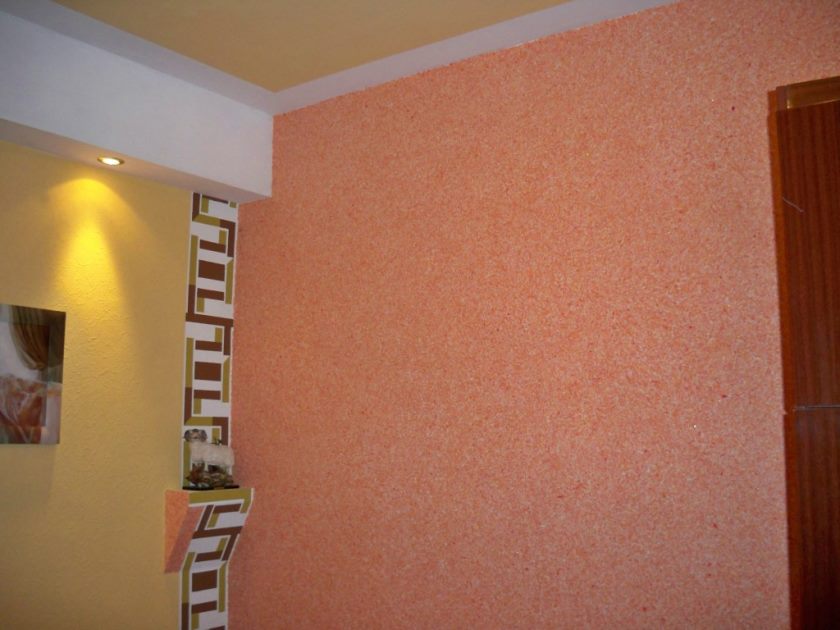


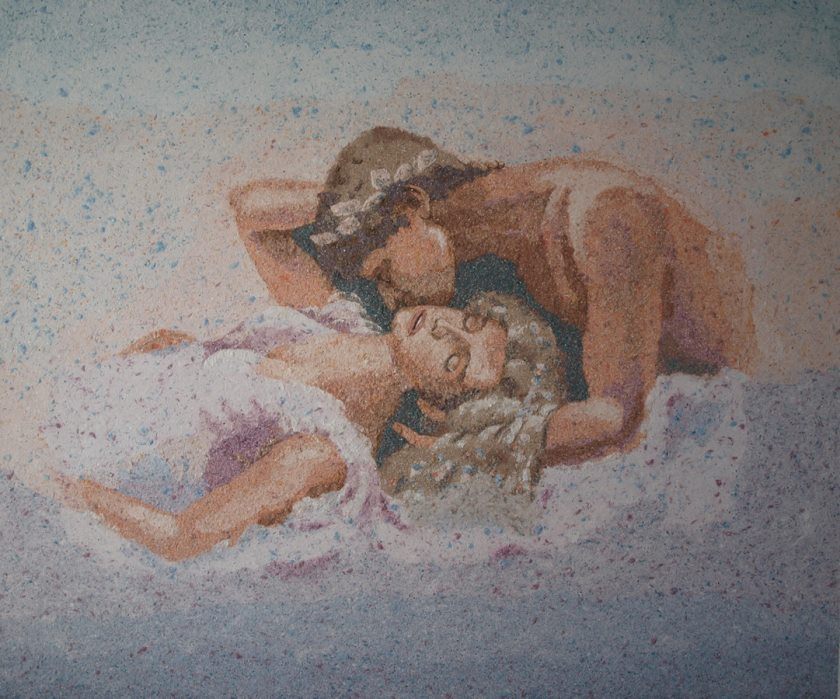
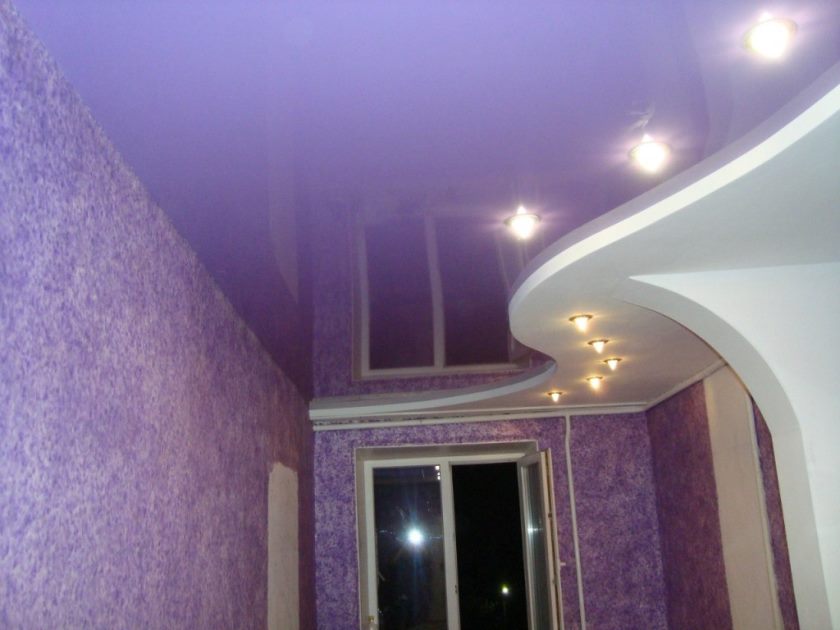


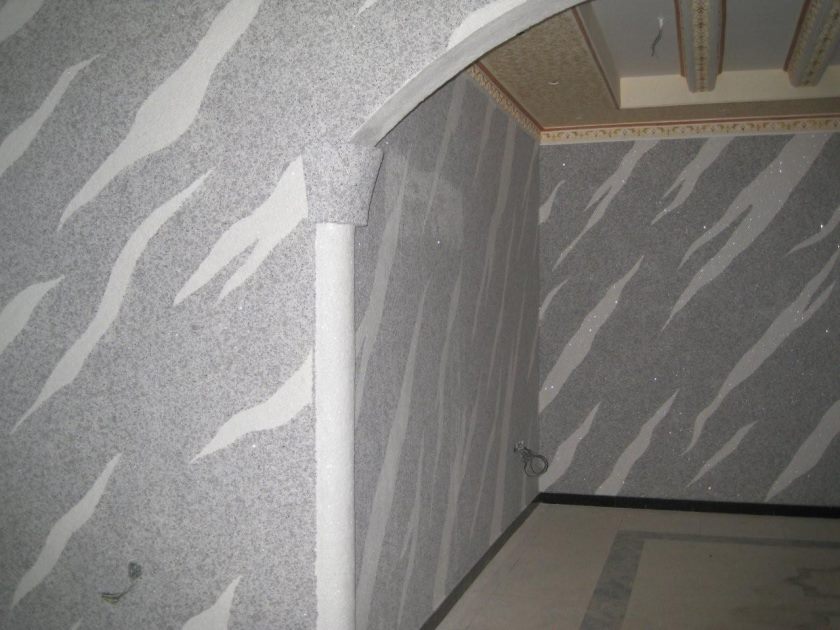
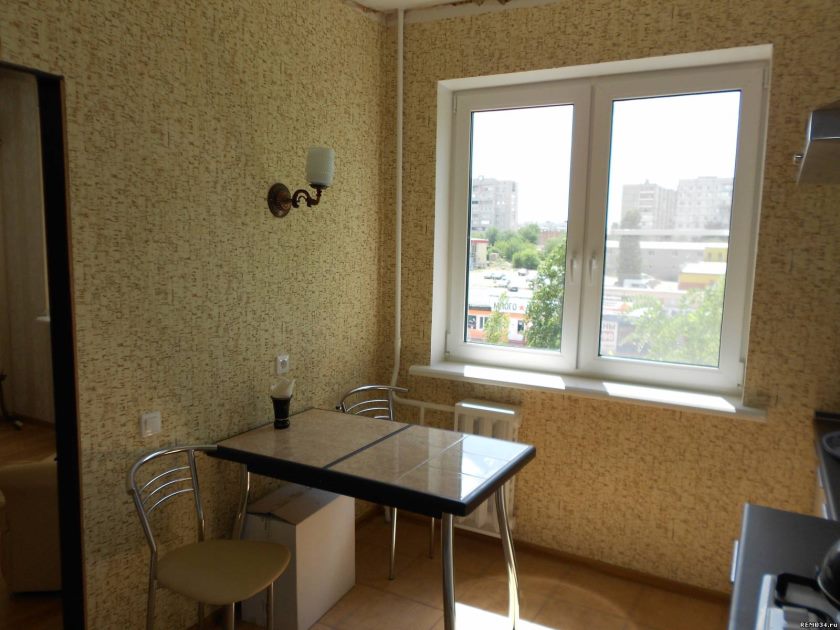
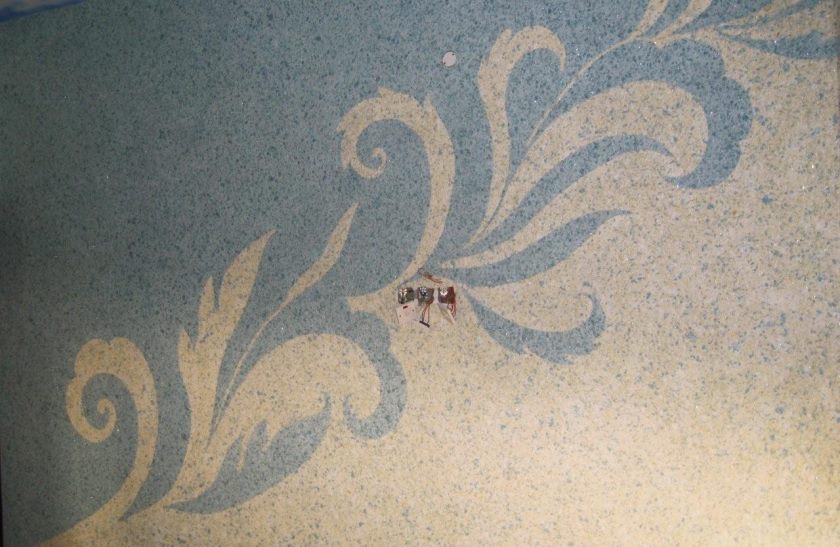



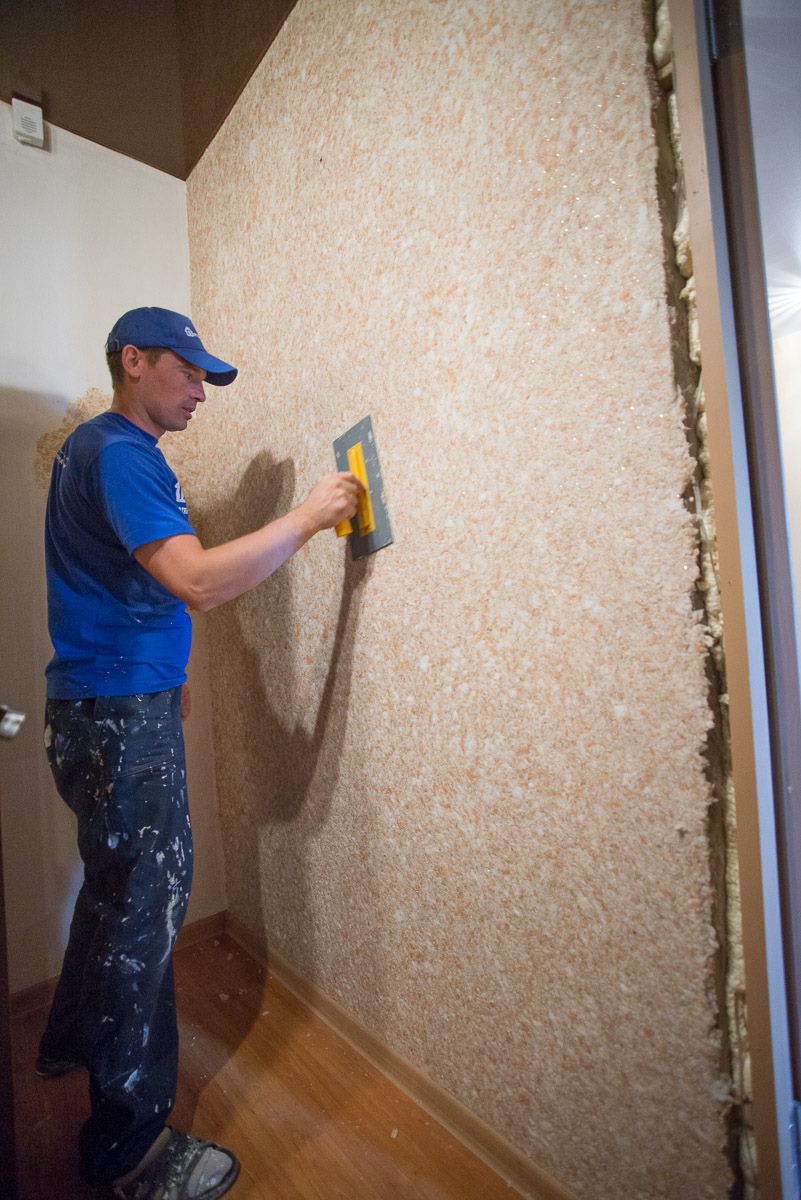
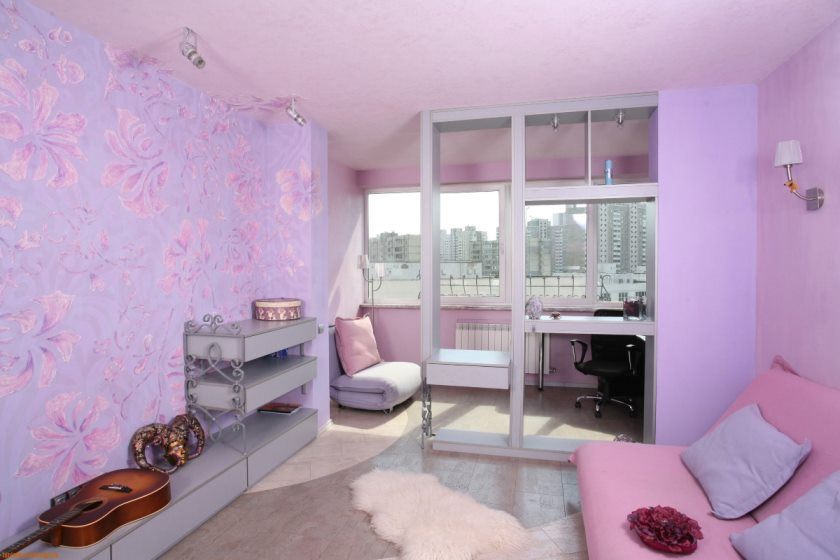
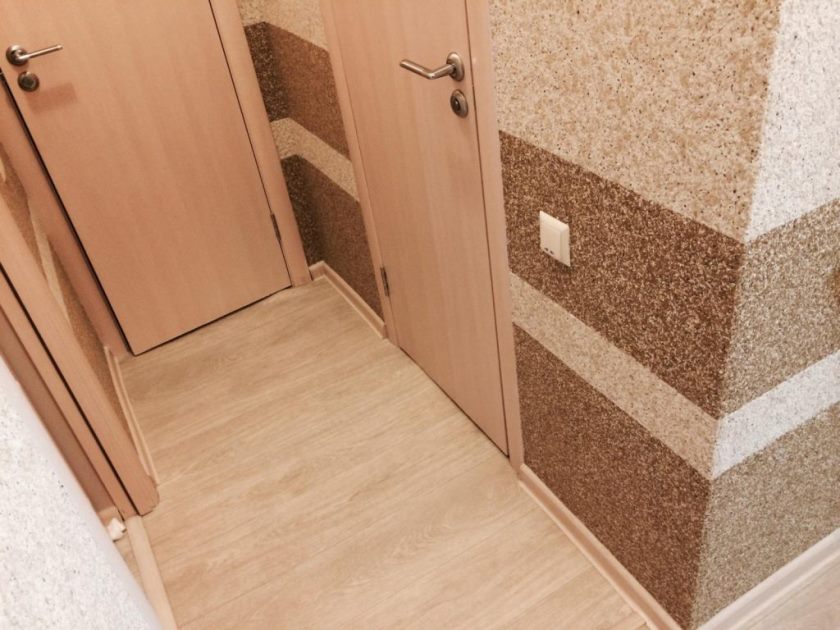
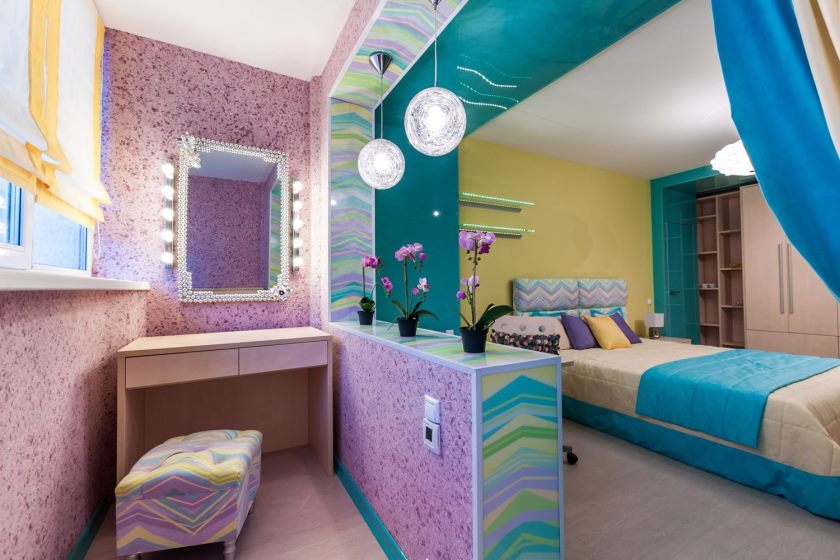

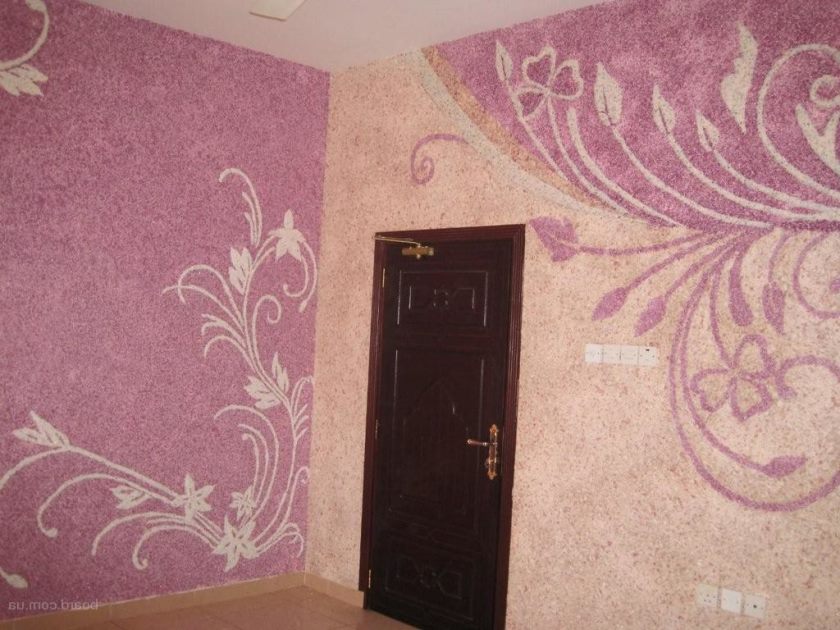
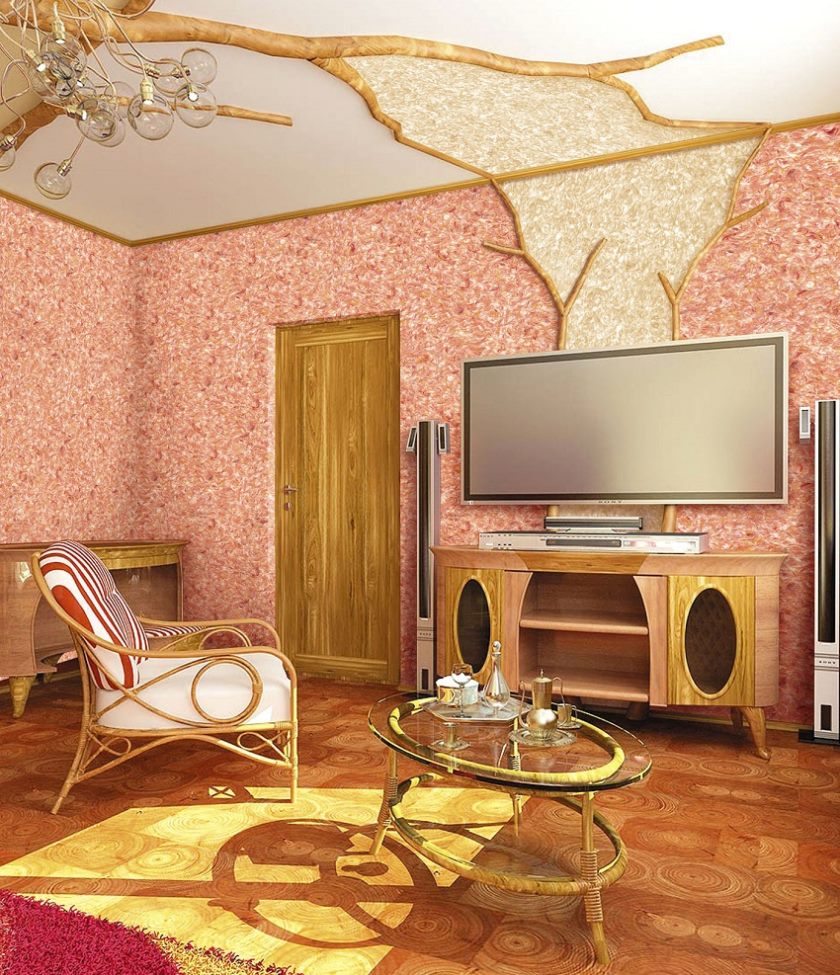

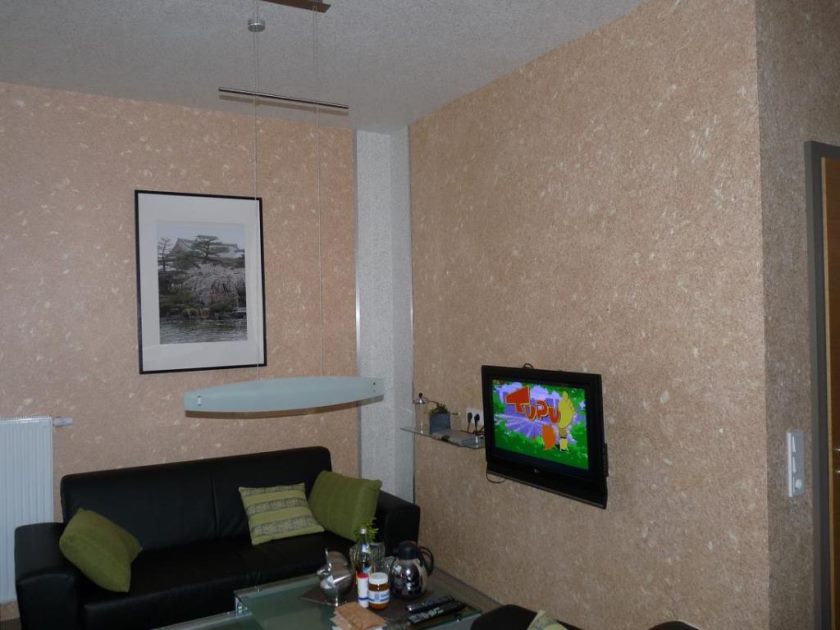
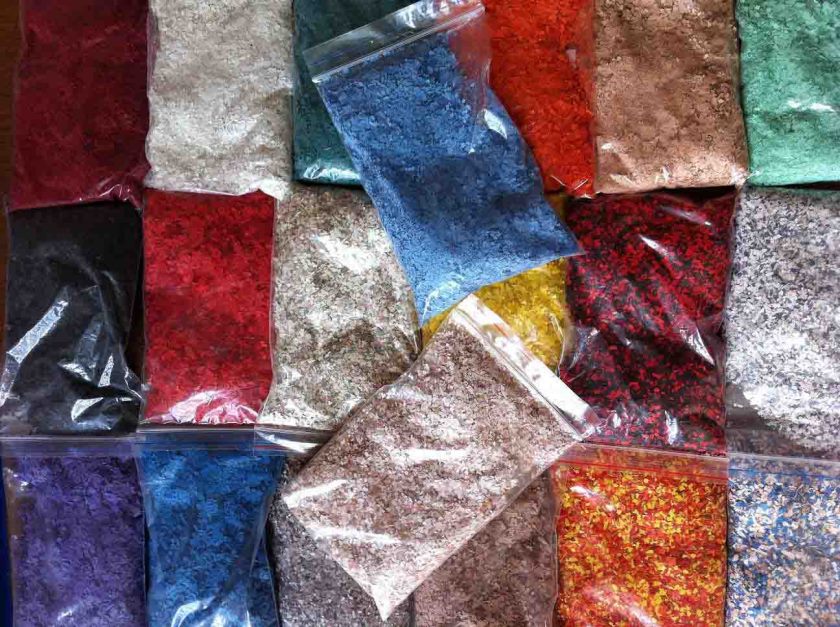
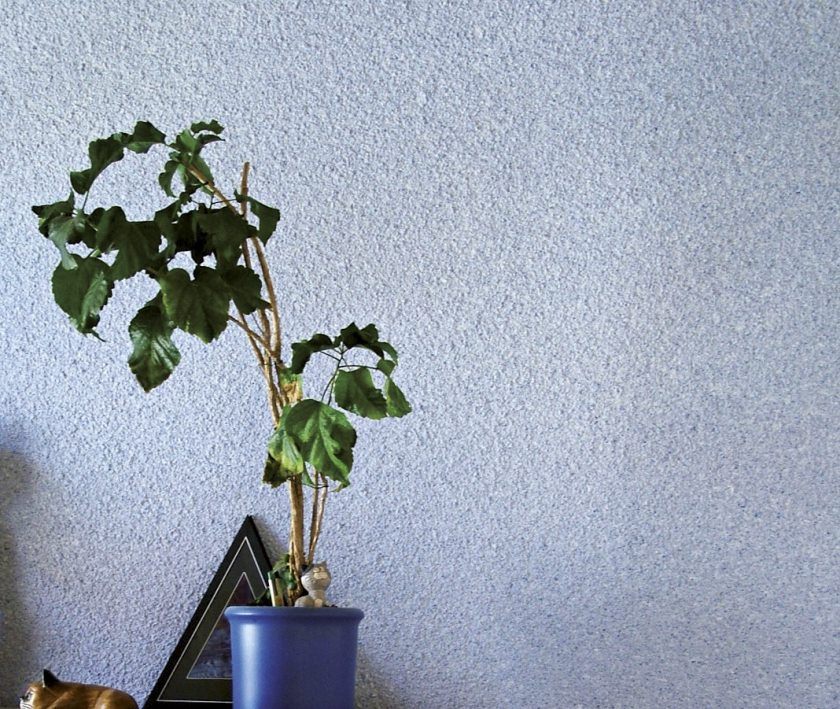

Great article, great ideas. In essence: the main advantage of liquid wallpaper, which is actually decorative plaster, is that this type of decoration does not apply to consumer goods. Moreover: it can become a real art. Unlike simple wallpapers, which are intended for those people who do not have money for a normal repair, but want everything to be “smart”, liquid wallpaper is not an imitation of luxury, but luxury. And the payment for such work should be much more expensive, because creating a drawing with your own hands requires a lot of art from the master. I believe that even the cheapest decorative plaster is cooler and more stylish than the most expensive wallpaper.Provided that it is made with high quality.